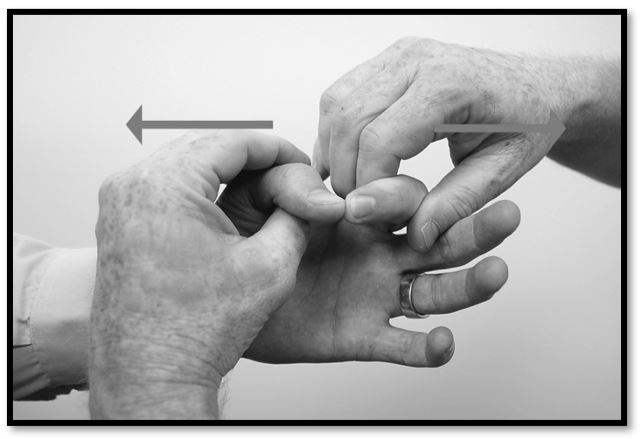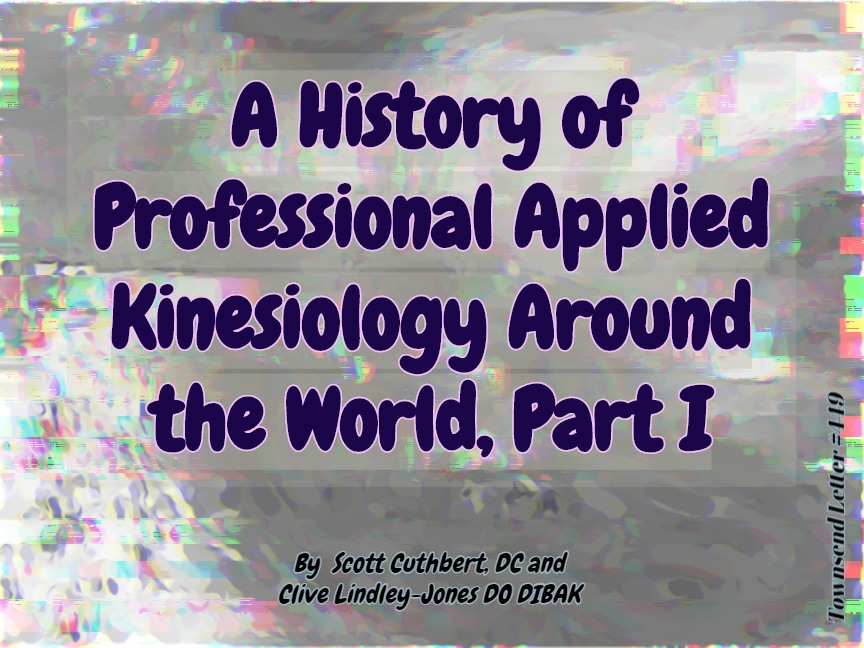…article continued:
How does this new tool enable us to broaden our understanding of the ancient art of Chinese diagnosis? What are the practical applications? TCM, as with any complete system, is large enough so that within itself it contains its own contradictions. For instance, often there is a reluctance to learn and use the 5-Element law in acupuncture practice due to the uncertainty that exists around pulse diagnosis. While pulse taking offers many of the body’s secrets in TCM thinking, it takes years to become proficient in order to be able to hear those secrets. Long before the subtleties can be appreciated, however, the basic pulse at the wrist must be read. This informs the TCM clinician of a state of too much or too little energy, or the relative balance of energies in the body. This pulse diagnosis is done for each of the meridians.
Regarding pulse point technique, the current pulses were not introduced until the Han Dynasty in the great text the Nan Jing. Before this the pulses were taken at different acupoints with multiple points for each meridian. The newer pulse points are locations on the radial artery, not actual acupoints, where the pulses are palpated to determine their nature for diagnosis.58 Thus, some AK practitioners prefer to go directly to alarm points to determine which one strengthens an inhibited muscle if it has an acupuncture relationship. With basic knowledge of meridian dynamics this is still very rapid.
Another way to diagnose the meridian energies pulsing through the wrist is through the simple technique of muscle testing. Through systematic testing and comparison of individual muscles, the clinician who understands the positions of the pulse points at the wrist can estimate the flow of Qi along separate meridians. MMT offers immediate feedback for the doctor and the patient so that one can already begin using the many complex approaches in TCM like the 5-Element law while, at the same time, learning pulse diagnosis. This method of incorporating the complexities of TCM into the contemporary practitioner’s use of CAM is common.55
Muscle testing offers a simple tool to read the energetic from the physical. In reading the pulses with the MMT, the current energetic and meridian state of the organism is reported, only in a new form. The pattern of muscle-organ/gland association of the meridians often parallel the relationships previously noted with Chapman’s and Bennett’s reflexes, thus enhancing all of the viscerosomatic relationships. This, along with many associated clinical observations, established the muscle-organ/gland association of Applied Kinesiology. The discovery of the relationship between meridians and meridian points to muscles and muscle groups and their shared visceral connections serve to further support the muscle-organ correlations developed in AK.20, 59
Dale lists the six principal clinical methods of diagnosing an aberrant acupuncture point, two of which include the MMT54:
- Tenderness and response to palpation (traditional TCM).
- Observation of changes in skin color or texture (traditional TCM).
- Significant change in the electro-permeability of the acupuncture point (Voll, Nakatani, Motoyama).
- A sudden increase in vascular response at the radial artery when the acupuncture point is aroused (Nogier’s vascular-autonomic signal).
- A significant alteration of muscle testing strength when an acupuncture point is therapy localized, that is, touched (the Applied Kinesiology’s approach), and
- The bi-digital O-Ring test, a scientifically investigated variation of the AK MMT, specifically employing the opponens pollicis muscle (Omura, 1981).
Goodheart introduced meridian therapy into the AK syllabus and wider chiropractic profession in 1966,60 after noting that imbalances in the meridians could influence the function of the muscular system. Many principles and philosophies from TCM were then added to AK, and AK approaches were added to TCM diagnosis and management, to complement the existing procedures.13 It is important to note that Goodheart incorporated concepts from TCM that were most important to the AK paradigm and chiropractic profession. For example, methods of point stimulation such as acupressure, teishin and manual tapping, are promoted instead of needling techniques. In fact most AK doctors do not use needle acupuncture in practice, but many of them were found to use non-invasive acupuncture treatment.61
Medical scholars of the Western world believed chiropractic to be little more than a simple biomechanical application with an instinctive (or placebo, ideomotor) action.
However, the work of Goodheart continued to grow over the next 50 years with astounding results to become one of the most used diagnostic techniques in alternative medicine. If the clinical results remained genuine, theories accepted by the most distinguished and established medical authorities would have to be questioned or discarded. After all, chiropractic and osteopathy are just gaining some recognition of legitimacy in the scientific world after 116 years of clinical history and efficiency.
Controlled clinical trials have discovered that, when a muscle is weak, it can sometimes be strengthened by stimulating the classic acupuncture tonification point for a certain meridian.62If the muscle is hypertonic, stimulating the sedation point of the same meridian will bring the muscle back to normal. Moncayo and Moncayo are endocrinologists trained in AK musculoskeletal and endocrinology, who have published a number of papers showing that AK MMT can diagnose and properly guide acupuncture treatment for patients with endocrine dysfunctions as detected by musculoskeletal examination findings and confirmed by blood testing.63
Costa and Araujo64 demonstrated one of the approaches used in Applied Kinesiology for decades in evaluating the meridian system. They showed that stimulation of the sedation point for the Bladder meridian (acupuncture point Stomach-36) induced decreased strength in the tibialis anterior muscle as measured by electromyography. The tibialis anterior muscle corresponds to the Bladder meridian in AK.

In the late 1970s Yoshiaki Omura (a medical doctor and electrical engineer) developed a method of TCM assessment (using the AK approaches of MMT and TL) that have been utilized in Western medicine, dentistry, veterinary and Oriental medicine.65 Dr. Omura visited Dr. Goodheart in his office in the 1980s and observed him. (Schmitt, personal communication) Omura has 44 Indexed papers listed in PubMed regarding the effects of Qi and other subtle energy fields and acupuncture areas and points upon the MMT.
Omura noticed that when a slight pressure was applied to skin areas, often related to previous pain, that a decrease in grip strength was observed. Omura noticed that it was possible to test a subject’s resistance to having their thumb and finger pried apart from one another when they only held their fingers “tip-to-tip,” in opposition to each other. This is the characteristic Bi-digital O-Ring Test (BDORT) for which this method is named. Omura expanded this observation by noting that a patient’s O-ring strength could change during contact with various test substances, e.g. specific nutrients, chemicals, pathogens, toxins, etc. He also found that a patient’s fingers could more easily be pulled apart during his O-ring testing when the patient came in contact with “unhealthful” items. Conversely, when in contact with “healthful” items, the original finger strength would be maintained.
Following the work of Goodheart, Omura showed56-57 that when a patient touched their Alarm or Mu point of an organ while simultaneously holding a substance suspected to be toxic to that organ, the BDORT showed a weakening response.
In addition to many journal articles chronicling his observations regarding the BDORT and its usefulness for other diagnostic problems, Omura published two books in Spanish on the BDORT and one in Japanese. A synopsis has also been published of this method, by an electrical engineer who worked with Omura for 20 years.66 Losco records that “The O-ring test is presently being used by many physicians around the world and it is being taught in some medical schools in Japan, Finland and Venezuela.”
It is fascinating to discover the ripple effect of Goodheart’s work extending so far in TCM, to encompass so many cultures and languages. Of course, the BDORT is only a small component of the vast collection of innovative AK methods now used by practitioners who use TCM. However, Omura’s crediting Goodheart with many of his innovations in this area is noteworthy.
The contributions and new principles relating to AK and TCM have been used as a springboard for many other techniques and systems, including Scott Walker’s Neuro- Emotional Technique,13 John Thie’s Touch for Health,67-68 John Diamond’s Behavioral Kinesiology,69 Roger Callahan’s Thought Field Therapy,70 Gary Craig’s Emotional Freedom Techniques,71 and Fred Gallo and Harry Vincenzi’s Energy Tapping72 (among many others) now established in the field of complementary and alternative medicine.
Dr. John Thie, Chiropractor and Founder of Touch for Health
Public awareness of AK and MMT has spread worldwide by virtue of the patient education program Touch for Health (T4H), designed by ICAK Diplomate Dr. John Thie.67 In 1970, Thie (the first chairman of the ICAKUSA) wanted “kinesiology” to be available for the general public while Dr. Goodheart wanted to continue teaching Applied Kinesiology only to professionals licensed to diagnose and treat patients. Goodheart challenged Thie to write a book for the public. This policy of teaching full-scope Applied Kinesiology only to physicians, and the various lay-systems derived from Applied Kinesiology operating in parallel in their respective fields, remains to this day. Dr. Thie’s books on Touch for Health are among the best-selling in the self-help and self-healing domains. The English text has sold over 500,000 copies and been translated into 23 languages.




